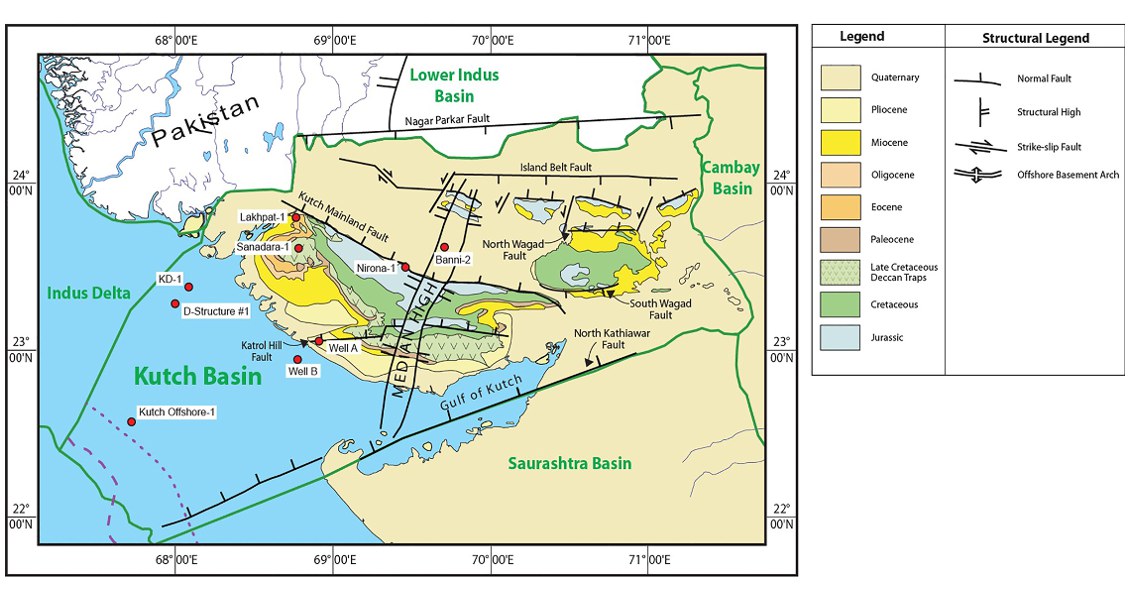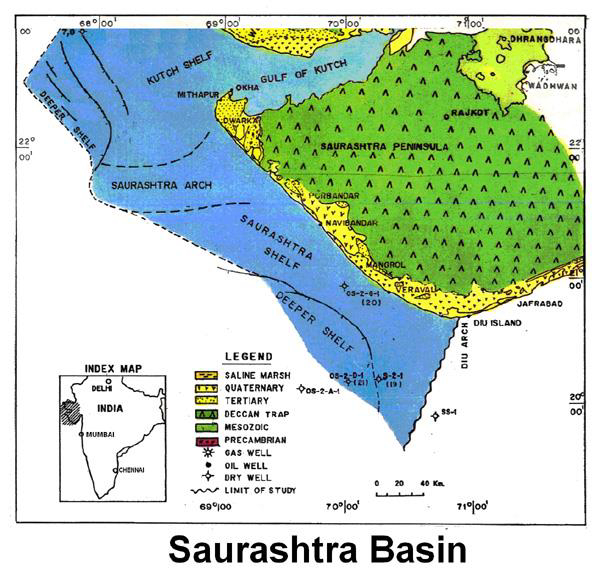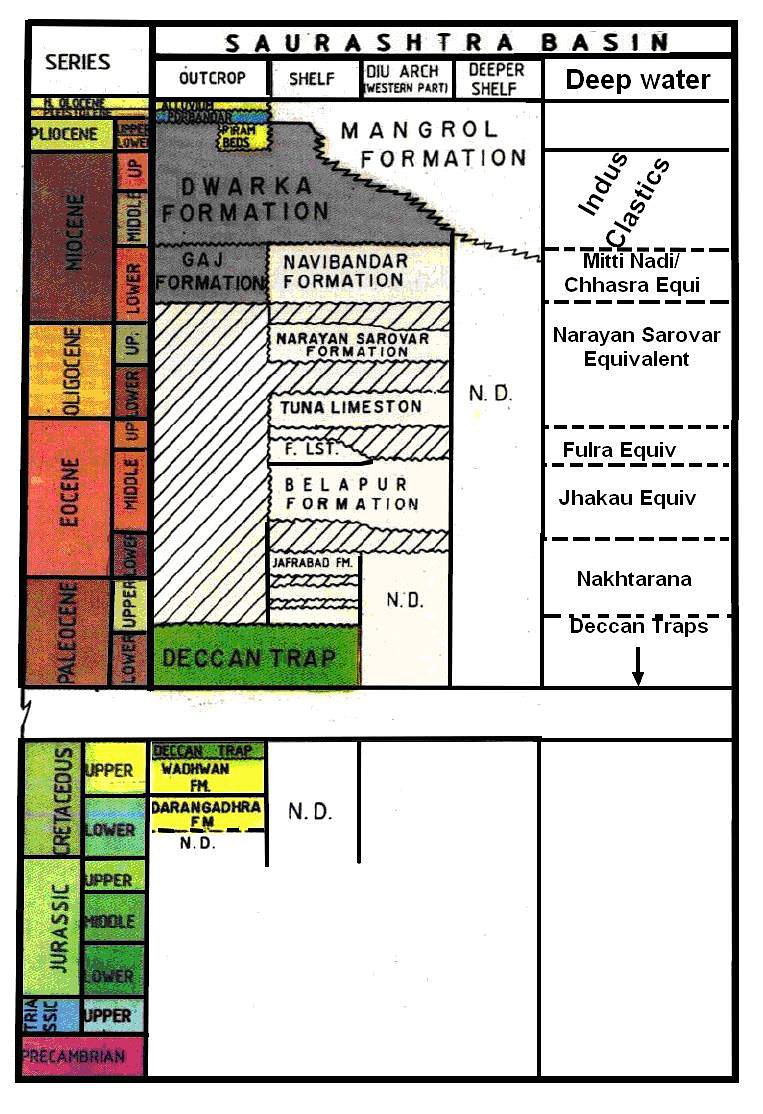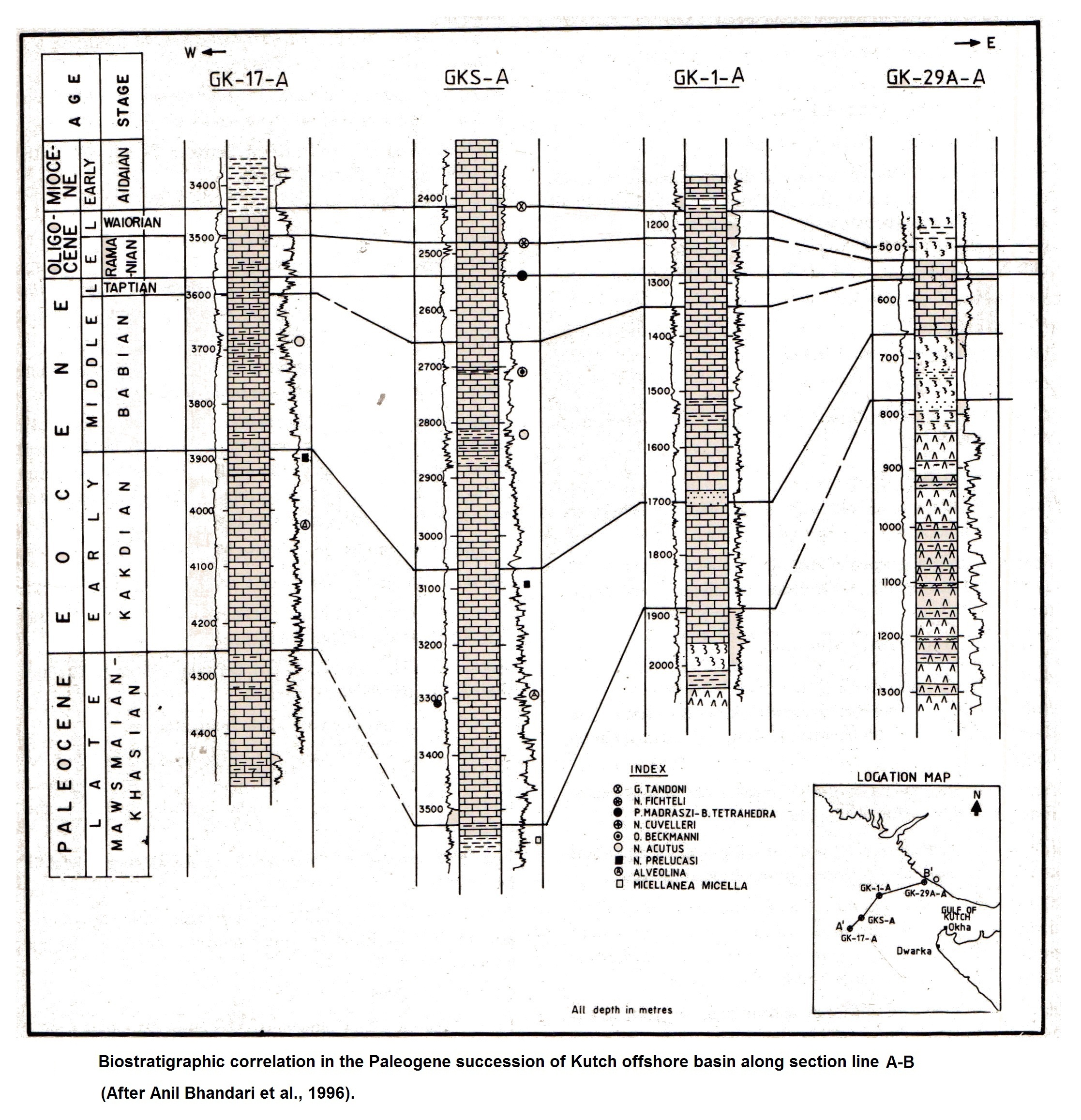Tuna Fm
Type Locality and Naming
SUBSURFACE. Its type section is in Well GK-1-1, interval of 1225 to 1285 m. [Original Publication: Zutshi, P.L., Mittal, S.K and Shah, L. (1993) Lithostratigraphy of Indian Petroliferous Basins, Document IV, Kutch Saurashtra Basin, KDMIPE, ONGC Publication, pp 1-50.]. Reference well: Well OS-2-G-1, interval of 1360 to 1483 m.
[Fig. Geological and structural map of Kutch, also showing the onshore and offshore wells drilled for oil exploration. (Map by Rasoul Sorkhabi in GeoExpro Dec2014, based on various sources including S.K. Biswas, Current Science, 25May2005)]
Lithology and Thickness
Clayey limestone. Consists of limestone with minor shale and siltstone. 60m in GK-1-1, the thickness in Kutch offshore ranges from 15-115m. Towards Saurashtra its thickness increases further. In the well OS-2-G-1 in Saurashtra Basin, this formation consists of limestone with clays and carbonaceous matter. Towards Diu Arch, limestone facies of this formation changes into dominantly shaly facies.
Relationships and Distribution
Lower contact
Unconformable with Fulra Limestone Fm. This boundary typically is marked by gamma and resistivity breaks on logs. This boundary also marked by last occurrences of Pellatispira zone in the Kutch shelf wells and Nummulites discorbis- Discocylina assemblages top in wells GKH-1 and Sutri-1 and top of Turborotalia cerruzoulesis top in other wells of Kutch.
Upper contact
Unconformable with the Narayan Sarovar Fm. It can be marked on the logs by increase in gamma and reduction in resistivity in the well KD-1.
[Figure 1: Biostratigraphic correlation in the Paleogene succession of Kutch offshore basin along section line A-B (after Anil Bhandari et al., 1996)]
Regional extent
Kutch and Saurashtra basin subsurface
GeoJSON
Fossils
Nummulites fichteli, Globerina tapuriensis
Age
Depositional setting
Varies from littoral to inner shelf to outer shelf.
Additional Information



